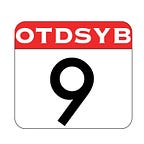Bloody Sunday in Dublin
Chronologically, this is the 7th of the 19 Bloody Sundays. It’s only the second that I’ve covered, though.
Hello, and welcome to On This Date, Some Years Back. Today is November 21, 2017, and on this date, 97 years back, in 1920, Michael Collins led the Irish Republican Army in operations to fight against British control of Ireland. British forces retaliated by opening fire on a crowd of innocent spectators at a sporting event.
In November 1920, the political climate in Ireland was reaching critical mass. The Irish War for Independence was nearing the completion of its second full year, and in all reality, the “war” had been a relatively peaceful affair with total casualties numbering around 300 to that point.
In the simplest of terms, the Irish Republicans were fighting for independence from Britain, because the wanted the autonomy of home rule. There were also Irish Loyalists, though, also called Unionists, weren’t convinced that home rule would be better than having the clout of United Kingdom behind Ireland. As such, the island of Ireland was divided, and fighting one of the most dominant empires in world history.
Michael Collins, one of the leaders of the Irish Republican Army, devised a plan to assassinate a number of known British Intelligence Operatives, who were undermining their efforts for independence. Collins’ plan targeted 35 British spies with a focus on a group nicknamed the “Cairo Gang”. After extensive planning and preparation, IRA teams were dispatched on Sunday, November 21 to take out the targets in simultaneous attacks throughout Dublin.
In a hotel, two men were shot. On Upper Pembroke Street, three spies were shot, two died on the spot, the third died in December. Two more men were killed on Upper Mount Street. But luck ran out on Lower Mount Street, where one target was killed, and one escaped, and the hit squad was forced to engage in a shootout with British paramilitary forces. This led to two more British deaths, but the capture of one of the IRA volunteers. Other attacks proved costly as well, as a few civilians were mistakenly shot by the IRA assassins.
By the time the attacks had concluded in late morning, 14 men were dead, one was fatally wounded, and five were wounded. The IRA had suffered minimal losses, and despite completing less than ⅓ of the stated objective, it seemed to be a huge success. They had struck a major victory against the British Occupiers.
Then, that afternoon, there was more bloodshed.
That afternoon, some 5,000 Dubliners gathered in Croke Park to watch a Gaelic football match. The people were so used to the goings-on relating to the war that they largely didn’t let it effect day-to-day life.
Outside the stadium, British forces assembled. Their orders were to surround the stadium, guard every exit, and search every man leaving the grounds for any evidence of involvement with the morning’s events. However, plans almost immediately gave way to chaos, with the paramilitary police opening fire as they stormed into the stadium. They continued to fire indiscriminately into the crowd for 90 seconds despite no apparent credible threat to them. No fewer than 164 rounds were fired, and possibly many more, the exact number is lost to time. 14 people were killed in the stadium, three of them were children.
But the day was not done yet. That night, in one of the British controlled prisons in Dublin, three prisoners, two of whom were high ranking IRA officers, were tortured and killed under “suspicious circumstances”. By “suspicious circumstances”, I mean, they were just tortured and killed by vengeful guards who then lied in an attempt to cover up their crimes.
In the aftermath of Bloody Sunday, Irish popular opinion of Britain flagged, and indeed, Britain lost a considerable amount of international credibility. The IRA were viewed as heroic protectors, and support for their cause grew stronger than ever. More importantly though, the British intelligence network in Dublin was severely damaged, and that allowed the IRA to operate more freely than ever.
Two separate British military courts investigated the Croke Park Massacre, and both deemed the actions of the forces unnecessary and out of control. Essentially, they admitted to something tantamount to a war crime. Yet, those findings were not made available to the public until the year 2000 thanks to government suppression.
Less than a year later, the Republic of Ireland would win its independence from the United Kingdom. In doing so, the Irish joined America as the only two countries to have successfully fought for their independence from Britain. The Irish Unionists winning their preference to remain in the Union. The island of Ireland was split into the Republic of Ireland, or Ireland as we know it, and Northern Ireland, a member state of the United Kingdom. Despite gaining independence, the issue was far from settled, and over the next century, the island of Ireland would face more partisan bickering and violence.
Thanks for reading, and be sure to check back tomorrow for a completely different, less successful rebellion against Britain.
Creating quality content on a daily schedule requires a massive commitment, and my desire is to not only do that, but expand into even more mediums (audio podcasts, web videos, etc.). If you enjoy these posts, or would like for them to be available in other formats, please consider supporting me on Patreon. Just $1 a month will help a ton, as well as get you access to exclusive content. Thanks.
